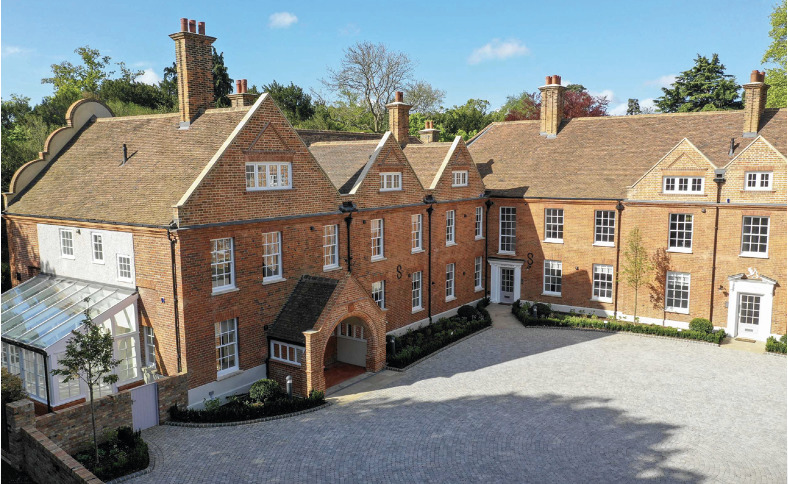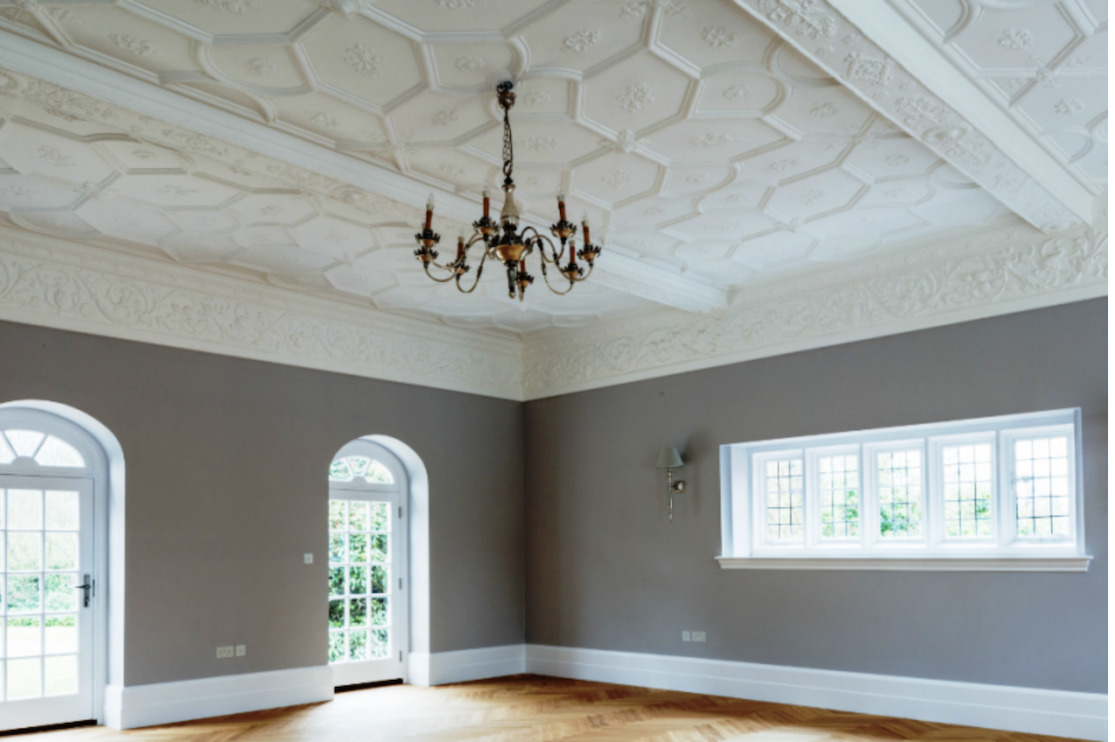
Totteridge Park is home to 10 high-end luxury properties standing in 5.5 acres of landscaped gardens. It is the result of two years of restoration work to restore the Grade II building into elegant, light, spacious accommodation, featuring a wealth of original features and character.
The project was led by architect, Will Moses of CSM Architects and project manager, Hilary Scott. The main contractors, Sullivan Brothers was appointed to deliver the contract over an 18 month build programme including sourcing specialist craftsmen to deliver the attention to detail. That detail includes beautifully restored decorative plaster work to solid pewter ironmongery and the magnificent period fireplaces.
The manor house at Totteridge Park dates back to the 1700s when it was built as a hunting lodge by prominent Whig politician the 1st Viscount William Bateman. Following Viscount Bateman’s residency was a string of decorated and distinguished tenants including a Lord Chief Justice in the 1750s and confectionery magnate, Sir Albert Barratt, in the early 20th century.
However, more recently the apartments had fallen into disrepair prompting the need for redevelopment, while two new build cottages were also added to the site that replaced a wing of the original house which was damaged by fire. Ensuring the entire project fitted the aesthetic of the original house was paramount, requiring meticulous attention to detail by combining period features with top-of-the-line ironmongery that met modern standards and specifications.

Scott, who has a wealth of experience in high-end residential projects – including arts and crafts homes in London’s Hampstead Garden Suburb – said when it came to selecting the hardware she “wanted to be in touch with the history of the building and an arts and craft feel in an appropriate finish”. She chose antique pewter which she says “not only leant a cottagey feel to the attic rooms but also worked on the grander rooms like the billiard room on the ground floor. I wanted something that looked authentic.”

The hardware was specified by G Johns & Son, an Essex-based fifth generation family-run business. “Jeremy came to site and specified door by door, including recessed handles in pocket doors. I’ve been using them for many years and their technical knowledge is superb,” says Scott.

Jeremy Barltrop, Registered Architectural Ironmonger and director at G Johns, said of the project: “It’s both an enormous privilege and responsibility to be asked to contribute to developments with such historical and local significance. The challenge of adaptively reusing heritage buildings appropriately is one that fascinates architectural ironmongers like me.
“We were asked to write an ironmongery schedule for 10 refurbished apartments with the initial enquiry relating to the entrance doors. After a site visit with the main contractor and the architect we decided to specify concealed cam action overhead door closers, mortice night latches and BS8621 rated euro deadlocks all of which were CE marked and Certifire approved,” explains Barltrop. “For the internal doors to keep with the traditional look of the property we specified pewter finish ironmongery throughout; including door knobs, sliding door handles, window fittings and cupboard knobs.

“Naturally, I’m delighted the developers at Totteridge Park chose to use our range of pewter products in their extensive redevelopment project as it’s a range that is totally faithful to the history and aesthetic of the wider site. As a material it strongly evokes opulence and heritage and our range is a fine example of how unique manufacturing techniques add further detail to the natural charm of metals. The breadth and quality of our pewter range meant we could fully furnish the entire site with everything required including door handles, fasteners, letter plates, escutcheons and more.
“To think that G Johns has played its part in the restoration and preservation of one of our country’s finest historical buildings is a source of enormous pride for me personally.”
The GAI has produced an end-user guide for residential properties. See gai.org.uk/users








